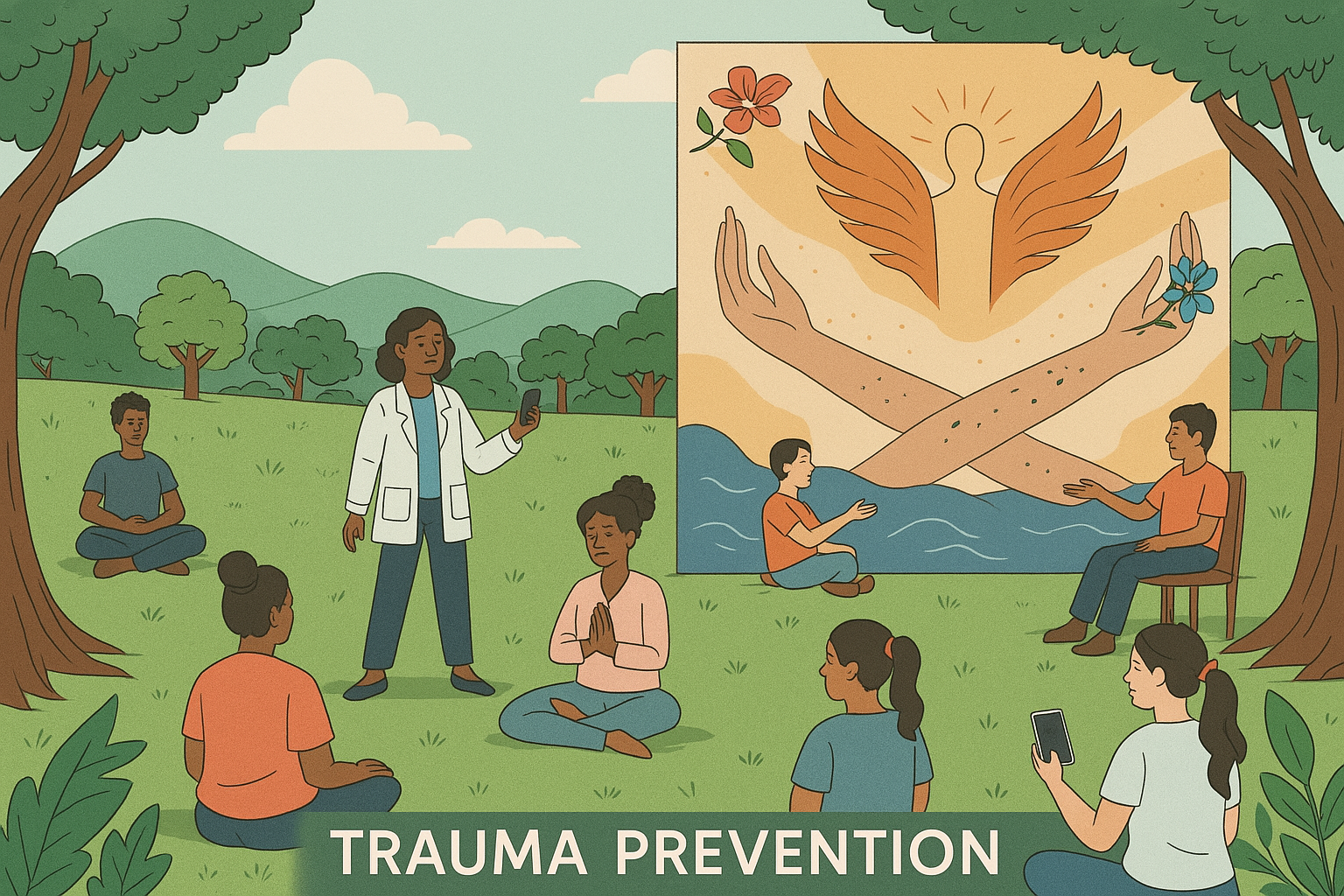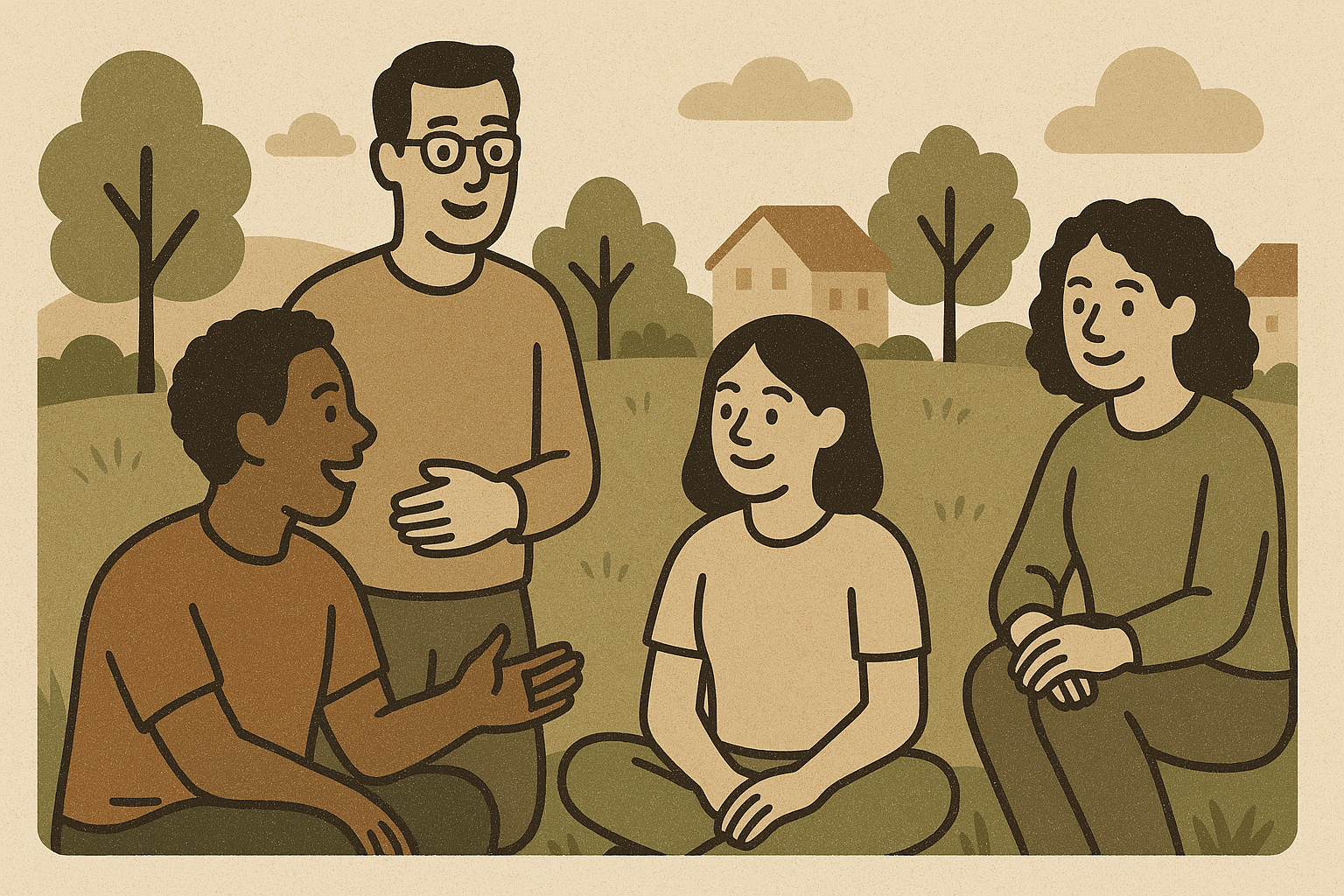The ACE Childhood trauma Test is a tool that helps evaluate whether your childhood experiences might have long-term impacts on your health. By identifying traumas like abuse or household dysfunction, the test can link early adversity to chronic diseases and mental health issues. This article explains how to take the test, understand your score, and what steps you can take based on your results.
Key Takeaways
-
The ACE Childhood Trauma Test assesses the impact of adverse childhood experiences on long-term health and social outcomes, highlighting the relationship between early trauma and chronic diseases.
-
High ACE scores indicate a greater likelihood of developing mental health issues and engaging in risky behaviors, emphasizing the cumulative effects of childhood adversities.
-
Preventive measures and community support are essential in mitigating ACEs, promoting resilient environments, and fostering healthy development for children.
What is the ACE Childhood Trauma Test?

The ACE (Adverse Childhood Experiences) Childhood Trauma Test emerged from a significant study conducted by Kaiser Permanente and the CDC between 1995 and 1997. This landmark research involved over 17,000 participants from Southern California, who provided detailed information about their childhood experiences and subsequent health outcomes. The primary focus of the ACE study was on childhood abuse and neglect, as well as various household challenges that participants faced during their formative years.
The ACE test aims to help individuals recognize the profound impact that their early traumas might have on their current health and social outcomes. Findings from the original ACE study revealed a strong connection between adverse childhood experiences and long-term negative health effects, including a higher risk of chronic diseases and mental health issues.
Recognizing these connections can help individuals and healthcare providers address and mitigate the lasting impacts of childhood trauma.
How to Take the ACE Childhood Trauma Test

The ACE Childhood Trauma Test is a simple but profound tool designed to evaluate the adversities one faced during childhood and assess their potential impacts on health. The test consists of ten questions that delve into various forms of childhood trauma and household adversities experienced before the age of 18. These questions cover a broad spectrum of early traumatic experiences, from abuse and neglect to household dysfunction, including the adverse childhood experiences test.
Reflecting on your past and answering questions honestly are key to getting an accurate assessment from the ACE test. The questions focus on different aspects of trauma, including verbal, physical, and sexual abuse, as well as other household difficulties. Each question is designed to uncover specific types of adversities, helping to paint a comprehensive picture of one’s childhood environment.
The following subsections break down three crucial questions from the ACE test, detailing what they assess and their significance. These questions provide clearer insight into how the test evaluates childhood experiences and their potential impacts.
Question 1: Verbal Abuse by an Adult
The first question of the ACE test focuses on assessing experiences of verbal mistreatment by an adult in the household. This question aims to evaluate whether an individual experienced frequent hurtful verbal behavior, such as swearing or humiliation, from an adult during their childhood. Verbal abuse, though often less visible than physical abuse, can leave deep emotional scars that affect one’s mental health and self-esteem.
Experiencing verbal mistreatment from an adult in the household can significantly impact a child’s development, especially if a household member depressed is present. It can lead to feelings of worthlessness, anxiety, and depression, which may persist into adulthood. Acknowledging these experiences is essential for understanding the full scope of childhood trauma and its lasting effects.
Question 2: Physical Abuse by a Parent or Other Adult
The second question of the ACE test examines whether the individual experienced physical punishment from a parent or another responsible adult. This includes assessing whether a parent or another adult frequently engaged in physical aggression, such as hitting or pushing, towards the respondent. Physical abuse is a severe form of childhood trauma that can lead to both immediate and long-term physical and emotional damage.
Physical abuse by a caregiver not only inflicts pain and injury but also instills fear and insecurity in a child. The trauma from such experiences, including emotional neglect, can manifest in various ways, including difficulties in trusting others, developing healthy relationships, and maintaining emotional stability.
Recognizing the prevalence and impact of physical abuse is key to understanding the full extent of adverse childhood experiences and addressing their consequences.
Question 3: Sexual Abuse Before Age 18
The third question of the ACE test addresses sexual abuse experienced before the age of 18. This question focuses on instances of sexual abuse, including any form of inappropriate sexual behavior or contact, that occurred before the individual turned eighteen. Sexual abuse is one of the most devastating forms of childhood trauma, with profound and lasting impacts on a person’s mental and emotional health.
Experiencing sexual abuse during childhood can lead to a wide range of psychological issues, including depression, anxiety, and post-traumatic stress disorder (PTSD). It can also affect one’s ability to form healthy relationships and maintain a positive self-image.
Addressing the trauma of sexual abuse is crucial for healing and recovery, making this question a vital component of the ACE test.
Understanding Your ACE Score

Knowing one’s ACE score is crucial for recognizing the potential health risks associated with adverse childhood experiences. The ACE score is calculated based on the number of affirmative responses to the test’s questions, with higher scores indicating a greater likelihood of experiencing a range of health and developmental challenges.
Research from the original ACE study shows that individuals with at least four ACEs have significantly elevated risks for various health issues, including mental health disorders and chronic diseases. A higher ACE score also correlates with an increase in risky behaviors in adulthood, such as substance abuse and unsafe practices.
The impact of ACEs is cumulative, meaning the more adversities a child experiences, the greater the risk for negative outcomes. Your ACE score can guide you towards interventions that improve health outcomes and foster resilience.
The Impact of High ACE Scores

High ACE scores are associated with a wide array of negative health and social outcomes. Individuals with high ACE scores are at an elevated risk of substance abuse and mental health disorders, such as depression and anxiety. These individuals may also face difficulties in forming stable and healthy relationships throughout their lives. The long-term social effects of ACEs can include challenges in maintaining employment and financial stability, as well as academic difficulties during childhood.
Moreover, high ACE scores are linked to a significantly increased likelihood of developing chronic health conditions like heart disease and diabetes. Children exposed to adverse childhood experiences are more prone to experience academic challenges and behavioral issues in later life.
The cumulative impact of these experiences can lead to financial instability and unemployment over a person’s lifetime. This underscores the importance of addressing and mitigating childhood traumas.
Building Resilience Against Adverse Childhood Experiences

Adopting strategies that help mitigate the effects of trauma is crucial for building resilience against adverse childhood experiences. A balanced diet rich in fruits, vegetables, and omega-3 fatty acids can help reduce stress effects in children. Physical activity, with at least 60 minutes of daily exercise, is crucial for alleviating the impacts of toxic stress. Mindfulness practices, such as meditation or guided imagery, can enhance children’s coping skills and emotional regulation.
Spending time outdoors and engaging with nature also plays a significant role in reducing stress and promoting well-being. Educating children about their feelings and effective coping strategies contributes to their resilience and emotional intelligence.
Community support services, like therapy and crisis intervention, can offer essential help when ACEs occur. Programs like ‘Early Head Start’ and ‘Incredible Years’ provide evidence-based interventions to support families and enhance children’s social and emotional skills.
Prevention of Adverse Childhood Experiences
Creating safe and nurturing environments for children is essential for preventing adverse childhood experiences, along with fostering relationships with supportive adults who listen and respond to children’s needs. The CDC’s ‘Essentials for Childhood’ program focuses on preventing ACEs by promoting safe and nurturing environments for children. Communities can significantly reduce ACEs by fostering supportive and stable environments.
Family-friendly policies, such as paid parental leave and childcare assistance, can alleviate stress for families and contribute to ACE prevention. Public health initiatives aim to prevent ACEs by addressing social factors that contribute to childhood trauma, like poverty and family stress.
Parenting training programs can improve skills that are crucial for healthier early childhood development. Community organizations, including faith-based groups, play a key role in enhancing access to quality childcare and educational programs.
The Role of Communities in Addressing ACEs
Support from family, friends, and community members plays a vital role in helping children cope with adverse experiences. The CDC is dedicated to creating systems that support development. Their goal is to ensure that every child has the opportunity to thrive in their community. Their strategic goals for ACE prevention and response include preventing, identifying, and responding to ACEs at various levels to ensure lifelong health and well-being.
Communities play a vital role in addressing adverse childhood experiences by providing support frameworks for children and families. Creating safe and supportive environments can significantly mitigate the negative impacts of ACEs and promote healthier, more resilient future generations.
What Organizations are Doing to Combat ACEs
Organizations like the CDC are implementing national initiatives to reduce the prevalence of ACEs through data collection and resources. These initiatives involve collaboration with local agencies and stakeholders to address and prevent ACEs directly. Communities are developing localized strategies that focus on creating safe, supportive environments for children and families.
Partnerships between schools, health services, and community organizations enhance support networks for at-risk populations. Education and awareness programs are being initiated to inform the public about ACEs and their long-term impacts on health and wellness. Workshops and training sessions aim to empower community members and professionals to recognize and respond to ACEs effectively.
Childhood vs. Adulthood Trauma: Why Timing Matters
The ACE quiz helps identify trauma that occurs specifically during childhood, which tends to have different long-term effects than trauma experienced in adulthood. Childhood trauma—especially when repeated over time—can lead to complex trauma, developmental trauma, and deep attachment wounds, while trauma in adulthood is more likely to be acute trauma, often from a single event. Complex trauma, such as growing up with a problem drinker, a depressed or mentally ill household member, or a household member who was physically abusive, can alter brain development and significantly increase the risk of mental illness, emotional dysregulation, and chronic health problems later in life.
When a parent or other adult in the home made you feel unsafe, or when you were physically hurt or exposed to unwanted anal or vagina intercourse, the emotional consequences can be lifelong—especially when those experiences come from someone you were supposed to trust. Children who don’t feel close to a caregiver or who grow up without feeling that their family loved them are more likely to suffer from negative mental health outcomes in adulthood.
How Household Dynamics Shape the Impact of Trauma
The ACE quiz categorizes trauma into three categories: abuse, neglect, and household dysfunction. These categories cover experiences such as having a problem drinker in the home, witnessing violence between parents, or having a household member incarcerated. If you had a household member who attempted suicide or suffered from mental illness, this also impacts your ACE score.
While both childhood and adult trauma can impact health, childhood trauma tends to shape identity, emotional regulation, and belief systems—making it one of the leading causes of adult mental illness and chronic health problems. The ACE quiz is a powerful tool for understanding how early exposure to adversity—especially when caused by a parent or other adult or another household member—can lead to increased risk of physical disease, substance abuse, and mental illness.
If you or someone you know experienced physically hurt or anal or vagina intercourse as a child, especially from a parent or other adult, these experiences are not only traumatic but can be compounded by feeling unable to feel close to others. Understanding your ACE quiz score can help you recognize the roots of emotional pain and work toward healing.
The Limits of the ACE Questionnaire: Covert vs. Overt Childhood Trauma
While the adverse childhood experiences test (or ACE questionnaire) is a valuable tool for identifying traumatic events during early childhood, it’s important to recognize its limitations. One of the biggest issues is that it primarily captures overt abuse—like violent treatment, childhood abuse, and Community violence—but often overlooks covert abuse and more subtle forms of emotional neglect or neglect.
This matters because adverse experiences aren’t always loud or visible. Toxic stress from serious hardship, parental separation, or the lack of a nurturing relationship in the family can profoundly affect the developing child—even when there’s no physical abuse. A child growing up without emotional attunement or support may not check any boxes on the ACE test but still carry the psychological weight of neglect, emotional abandonment, or relational trauma.
The ACE questionnaire captures only a slice of the full picture. It was never meant to cover every type of traumatic event or to define the many pathways through which family dynamics, neglect, or the absence of nurturing relationships can lead to long-term struggles.
Bay Area CBT Center Trauma Test
To dive deeper into the impact of both overt and covert trauma, including more nuanced types of childhood abuse, take our Childhood Trauma Test at the Bay Area CBT Center. This comprehensive assessment will help you identify how severe your symptoms are, what type of therapy would be best for your trauma, and what format would best suit your needs.
Trauma Therapy Services at the Bay Area CBT Center
At the Bay Area CBT Center, we offer integrative, evidence-based approaches for healing trauma, whether you’re dealing with recent traumatic events or long-standing wounds from childhood. Our specialized services include EMDR therapy, somatic therapy, and prolonged exposure therapy—each designed to help you reprocess painful memories, regulate your nervous system, and reconnect with your values.
We provide trauma therapy in San Francisco, trauma therapy in Los Angeles, and trauma therapy in Oakland both in-person and online throughout California. Our trauma specialists use cutting-edge techniques that combine cognitive, emotional, and body-based approaches to support deep, lasting healing.
Whether you’re recovering from childhood abuse, relational trauma, or complex PTSD, our team is here to guide you every step of the way.
Summary
Understanding the ACE Childhood Trauma Test and its implications is crucial for recognizing how early adversities shape our health and behavior. By taking the ACE test, interpreting your score, and understanding the profound impacts of high ACE scores, you can better address and mitigate the effects of childhood trauma. Building resilience and preventing adverse experiences are essential steps in fostering a healthier future for ourselves and our communities.
Communities and organizations play a pivotal role in addressing ACEs, providing support and creating environments where children can thrive. By working together, we can reduce the prevalence of adverse childhood experiences and promote healthier, more resilient generations. Let’s take action today to build a brighter tomorrow.






















































